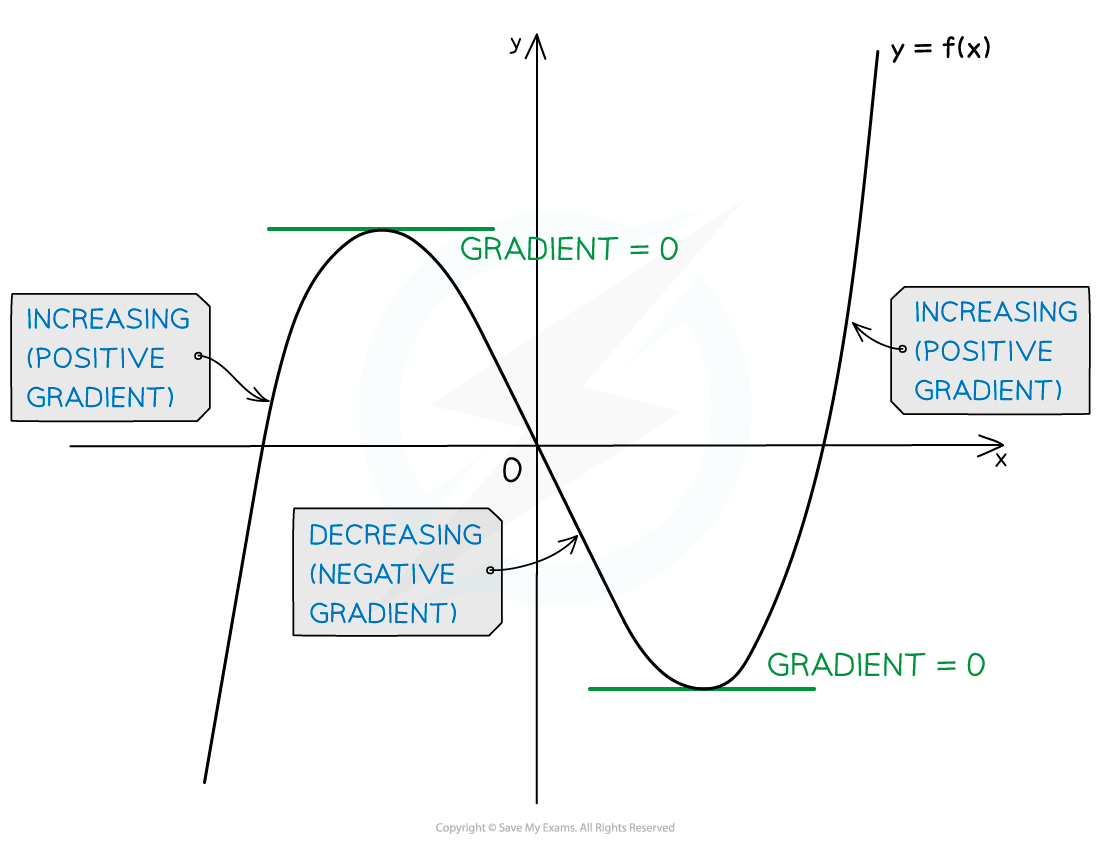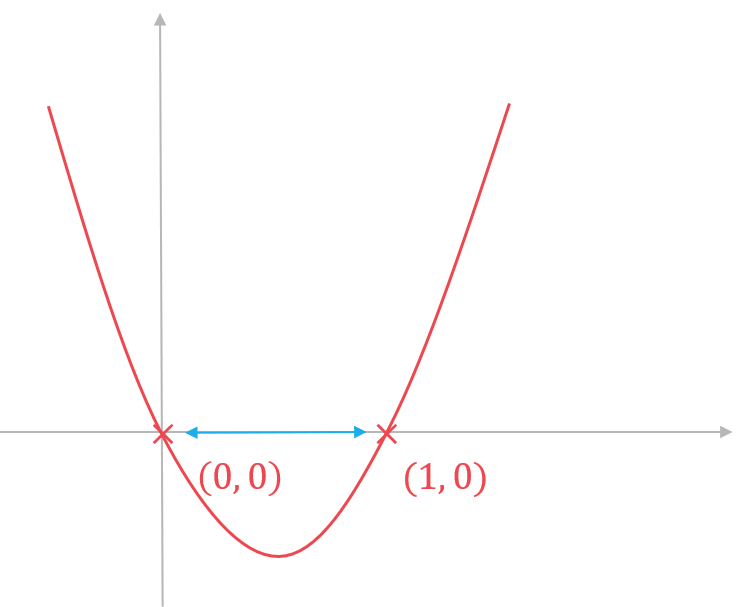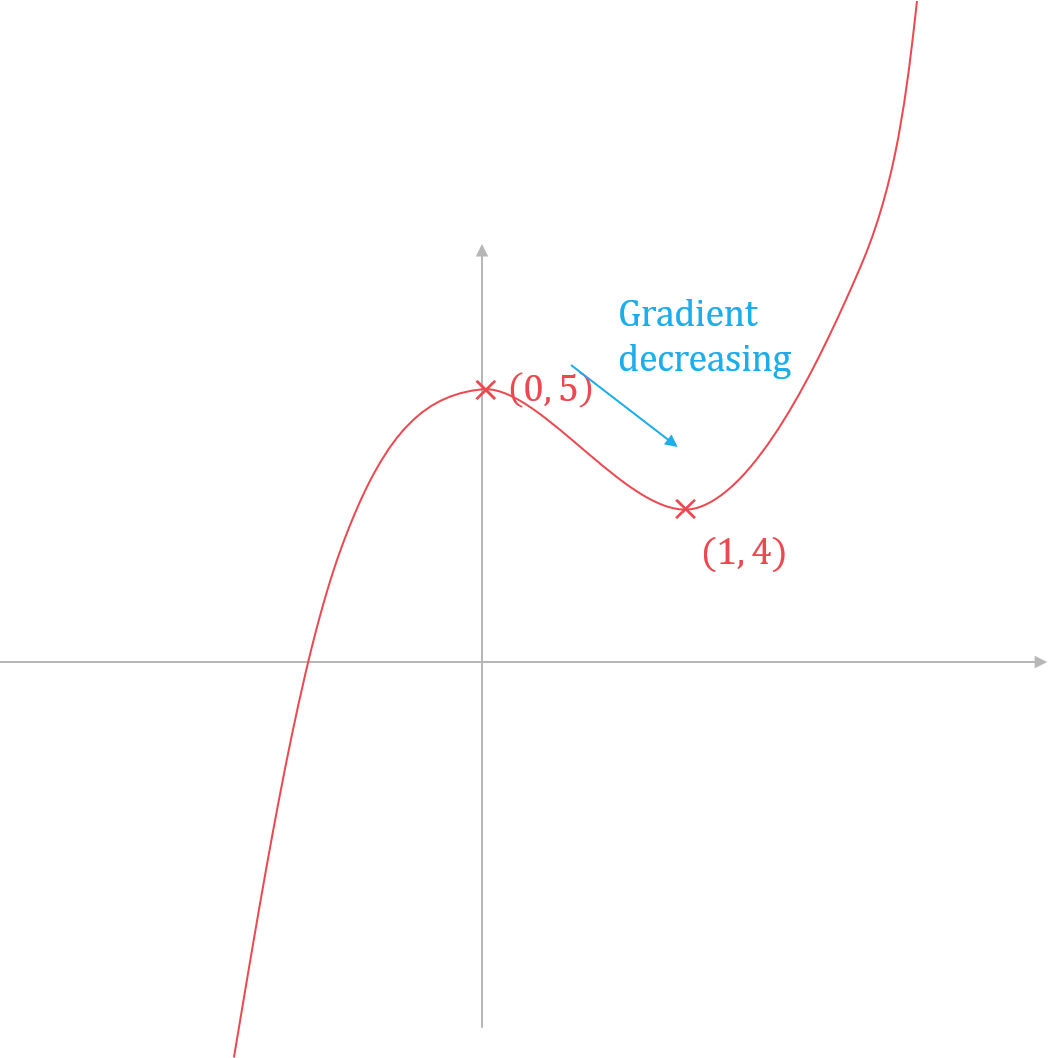Increasing & Decreasing Functions (AQA GCSE Further Maths): Revision Note
Exam code: 8365
Increasing & decreasing functions
What are increasing and decreasing functions?
A function is increasing when
(the gradient is positive)
This means graph of a function goes up as
increases
A function is decreasing when
(the gradient is negative)
This means graph of a function goes down as
increases

To identify the intervals (the range of
values) for which a curve is increasing or decreasing you need to:
Find the derivative
Solve the inequalities
(for increasing intervals) or
(for decreasing intervals)
Examiner Tips and Tricks
In an exam, if you need to show a function is increasing or decreasing you can use either strict (<, >) or non-strict (≤, ≥) inequalities
You will get the marks either way in this course
Worked Example
For what values of is
a decreasing function?
The function is decreasing when its gradient is less than 0.
Find the derivative of the function by differentiating.
Solve the inequality to find the set of values where the gradient is negative.
Factorise.
The solutions to are
and
. Find the correct way around for the inequalities by considering the graph of
. The graph is a positive quadratic, so the function is negative between the values of 0 and 1 (where it is below the
-axis).
Considering a sketch of the graph of the gradient function may help you see this.

You can check your answers by considering a sketch of the original function, it should be decreasing at the point where


Unlock more, it's free!
Did this page help you?